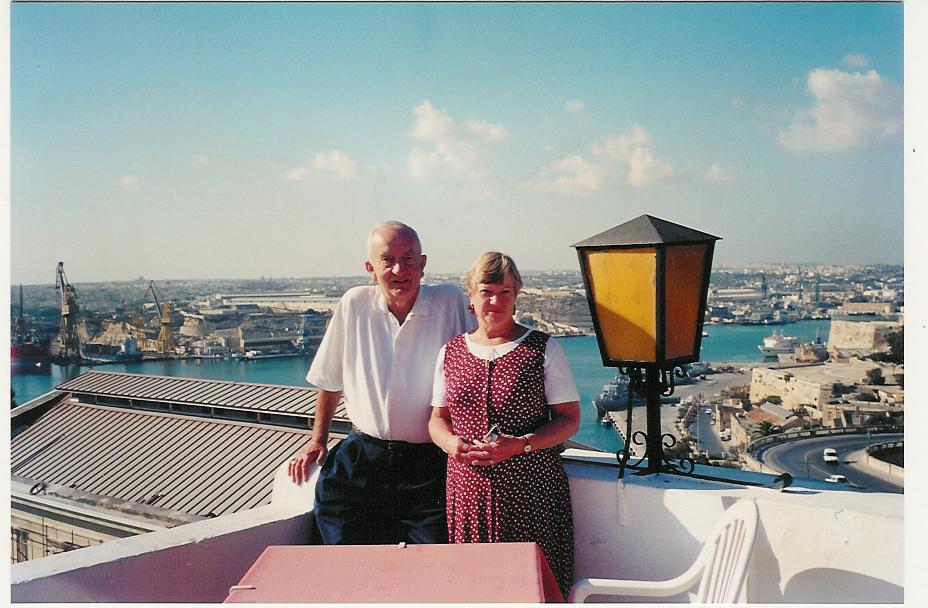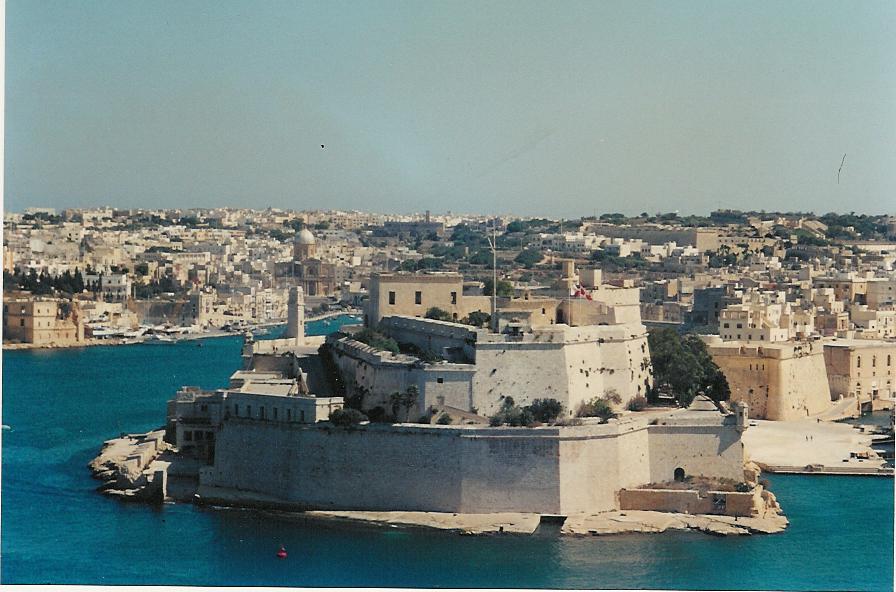

Malta 2002
The Island of the Crusaders
Located at the crossroads of the Mediterranean, half way between Europe and Africa, Malta has a long and colorful history which dates back over 5,000 years. We visited Malta in a three day side trip from Italy in September.
 |
 |
Hotel Castille - Rooftop Restaurant Fort St. Angelo
People and History.
Perhaps, best known in history as the home of the Crusaders during the Middle Ages, the recorded history of Malta dates back to 1,000 B.C. when it was settled by Phoenician seafarers. Its actual history, though, can be traced back to the 4th millennium B.C., a thousand years before the Minoan civilization began on the island of Crete when the original the Maltese were engaged in the construction of great megalithic temples which still stand in proud splendor today.Its people today are an amalgam of all of the invaders who have occupied Malta through the ages . . . the Romans, the Arabs, the Knights of St. John, the French and the British to name just the principal ones. Today’s 375,000 Maltese speak their own unique Phoenician-based language . . . although most speak English as well, as a result of their having been a British protectorate since 1802. They attained their independence from England after World War II in 1964 and are fiercely proud of their national status.
The best known episodes in their long and colorful history are their two successful defenses of their island . . .first during the Great Siege by the Moslems in 1565 and again by the Germans during World War II. Having been driven from Jerusalem at the end of the Crusades, the Knights of the Order of St. John settled for a brief period on the island of Rhodes where they were again driven out by the Moslems and finally granted a home on the barren and rocky island of Malta by the kings of Europe . . . whom they served as a religiously-based, foreign legion of the day.
Angered by the Knights disruption of their shipping trade by their marauding ships and hoping to use Malta to stage his own invasion of Europe, Suleiman the Magnificent ordered their destruction by sending 130 ships and 30,000 troops to take Malta from the island’s defenders which numbered only 700 knights and 3,000 Maltese. Following a bloody siege which lasted for four months and reduced the defenders to but sixty knights and a few hundred Maltese, the invaders finally yielded and return to Turkey. Some of the stories of the white-robed Janissaries and other fanatic Moslem warriors, who were willing to charge the fortifications under overwhelming fire in the belief that in death, they would sit at the hand of Allah and be entertained by hosts of virgins, seemed an uncanny preview of some of the same stories we’d read about their descendents who had attacked the world trade center just weeks before our visit. Following the siege, the island was re-fortified into a series of large fortresses, stone walls and rock embankments which shape the island’s defenses even today.
Again during World War II, Malta was used as a British naval and air base to interdict German supply lines to their troops in North Africa. However, they paid a terrible price in a continuous bombardment and siege of the island that lasted for two years and during which more bombs were dropped than were dropped on the city of London during the entire blitz. The civilian populations suffered heavy casualties and deprivations and were down to the final few days of food supplies when a naval convoy finally broke the siege and prevented mass starvation. One of the more interesting places we visited was the Lazarus War Room carved out from under the rocks under the city from which the British military command directed the air defense of Malta and from which General Eisenhower and his staff planned and carried out the invasion of Sicily in 1943.
Sights of Malta We stayed in the Hotel Castille within the old city walls of Valletta, the capital city of Malta, which was built in the 16th century, when the knights still lived in the city. The hotel had a marvelous view of the city from its roof garden restaurant, where we took breakfast every morning.Valetta has changed little since the days of the knights. Sights of interest included the Grand Master’s Palace, their magnificent cathedral and a number of auberge, which housed the eight different nationalities of the Knights of St. John, all with in easy walking distance from the hotel as was the historic Fort St. Elmo. The best perspective, though, of the island and its harbors was from a boat tour which offered views of the historic city from the water’s edge.
Since Malta is only 10 by 15 miles in size, we hired a car and driver to take us on a day trip of the island with visits to Mdina, a magnificent walled city in the center of the island which dates back to Roman times and
 Mdina Gate Mdina Palace Hagar Qim |
which once served as the capital city of Malta . . . . and to Hagar Qim, a Stonehenge-like monument thought to be the oldest, free standing stone structure in the world and which pre-dates the pyramids of Egypt by more than five hundred years.
We spent our final evening sampling a typical Maltese menu in the restaurant atop our ancient hotel wishing we had more time to spend on this fascinating island and very happy that we had chosen to come.